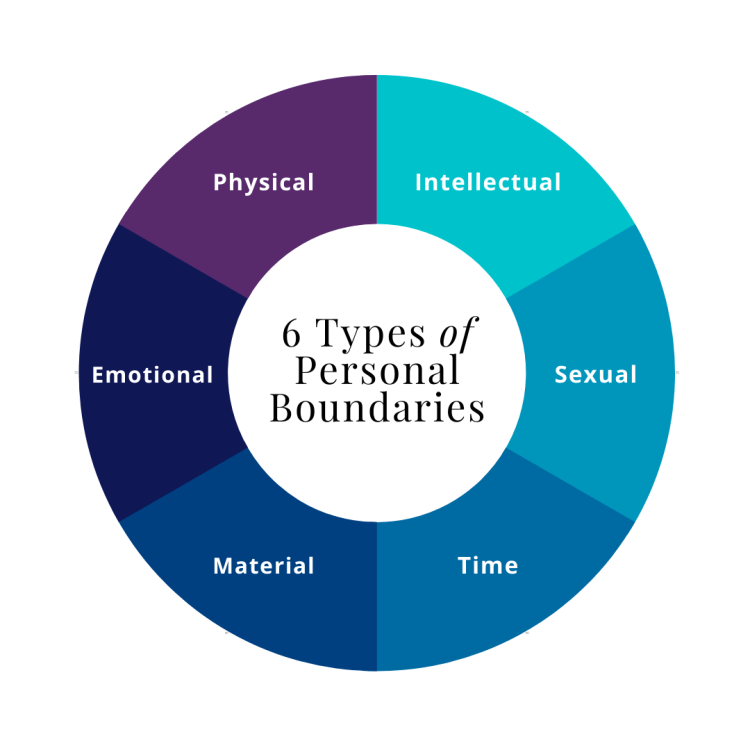In our society, there is a lot of pressure to be available for others at all times. This can lead to a lack of boundaries and a feeling that we are not enough on our own. One way to combat this is by setting boundaries in your life and sticking to them. In this article, I will share some tips for setting boundaries with other people in your life.
Setting Boundaries

Some people have a hard time saying no to others, while some say yes too often. This can be out of fear of hurting someone’s feelings or because they feel guilty for not doing what the other person wanted them to do in the first place. Setting boundaries is about communicating your needs and standing by them so that you are not taken advantage of by other people.
Boundary-setting is not about shutting down or pushing people away; it’s more of a way to communicate what you need and establish boundaries in your life. Even if someone asks for your help, it doesn’t mean you have to say yes. It’s okay to say no because you are already busy.
Sticking to Boundaries
If someone asks for help and you say no, he should listen. If the person keeps asking even after you said no, then it may be that they don’t respect your boundaries and will continue to ask for more.
Setting boundaries requires patience and consistency, so try to be aware of how you are feeling when someone asks or requests something from you. Are they asking too much? Are they not respecting your boundaries?”
Types Of Boundaries That You Can Set

It’s important to know your limits and be aware of the boundaries you are setting with certain people. Some common types of boundaries include:
Physical Boundaries
This is where you set a limit on how much time someone can spend in your physical space, especially if it makes you feel uncomfortable or anxious. You may also want to establish rules. This is about when they can come, what they can do in your home, and if you will be there.
Emotional Boundaries
You may also want to set boundaries on what topics someone is allowed to discuss with you and which ones make you uncomfortable. Setting this type of boundary means that the other person needs to respect your feelings and emotional state. You can also make up rules about what you will and won’t do for them, like supporting them when they make bad decisions or lending money.
Social Boundaries
Setting social boundaries means where you want to be with someone. You can decide if you want to talk to them and see them in a different place. You can make social rules for yourself to keep you healthy. For example, you might decide that it is best not to spend too much time on the phone. If someone is talking to you, then your work will not get done or your studying will not be good.
Ways To Set Boundaries
If you are having trouble setting boundaries, some things can make it easier.
- Put It In Writing: Write down your boundaries on paper so you don’t forget them or get confused by the other person’s words/actions. This is also good for when someone doesn’t respect your boundary because they will see what was agreed upon.
- Practice: If you are not used to saying no, then practice in the mirror. This will help prepare you for when someone asks something of you and it is hard to say no.
- Be Aware Of Your Body Language: How much space do you want between yourself and another person? Does your body language match what your boundary is? If you want to keep a certain distance from someone but your body language looks like you are closing yourself off, then the person will not respect that.
- Be Consistent: Set boundaries with people in different areas of life and stick to them. For example, when it comes time for family dinners don’t cancel last minute because everyone else is going to be there. If you do, then they will know that they can push your boundaries.
- Be Assertive: This means communicating what you want in a clear way without being aggressive or passive. For example, “I don’t feel comfortable when you come into my room without knocking” is assertive because it states the boundary and why it is important to the person.
Setting boundaries is not always easy, but it is important for both you and the other person involved. If someone does not respect your boundaries, then it may be time to end that relationship. Remember, you are in control of what happens in your life, and setting boundaries will help ensure that you are happy and healthy.
Benefits

Setting boundaries also has a lot of benefits.
- You Know Your Limits: If you know your limits then it is easier to say no when someone asks or tells you something outside of those limits. You will not feel overwhelmed and anxious because you have already thought about where the limit should be set.
- Self-Confidence And Self-Esteem: You are more likely to have high self-confidence and esteem if you know where your limits are. This means that not only do other people see this, but also yourself.
- You, Will, Feel Better About Yourself And Others May Respect You More: Setting boundaries can help with depression because it shows others how you want to be treated which makes them respect you more.
- It Helps With Setting Goals: If you know what your limits are then it is easier to set goals and measure progress because those boundaries will not change. This also helps with anxiety as a person can have the confidence that they won’t be pushed beyond their limit.
Setting Boundaries In Relationships And Friendships

When setting boundaries in relationships, some examples include…
- No longer hanging out with friends if someone keeps breaking plans or being unreliable
- Never going anywhere where there might be drugs or alcohol
- Not spending time on social media when you need to get things done
You should also consider how these changes could affect them if they want to continue the relationship/friendship but respect your new boundary rules. Some people might be upset that you are making this change, but it is important to think about yourself.
Boundaries With Family

There are different types of boundaries with family.
One could be time-related, like not being available all the time or on short notice for events. Another example could be what activities/events one attends as a family. For some people, setting physical distance boundaries is very important (i.e.: no hugs). Others might have dietary restrictions they want to be respected. Still, others may not want their personal information shared with anyone in the family without their explicit consent. The key is figuring out what makes you feel comfortable and safe and communicating that to your nearest and dearest.
It can be hard to set boundaries with family because they have been around for so long and have “seen you at your worst”. It is important to remember, however, that when setting boundaries with family it should be done respectfully.
Setting Boundaries In New Relationships & Dating

When entering new relationships or dating one has the opportunity to set their own rules/boundaries from the beginning. This is about what type of physical contact will happen, how much time the person wants to spend together each week or month, who else they are seeing currently, and whether or not there needs to be an agreement between both people about having other partners. These agreements can be written down. They might be verbalized, but it is better to write them down and put them in a safe place.
It is important to remember that these boundaries can always be renegotiated as the relationship progresses or changes. What might work at the beginning of a relationship may not be appropriate further down the line. And that’s okay!
The most important thing is that both parties agree with the changes and feel okay telling us if they have any problems.
Setting Boundaries In The Workplace

Boundaries in the workplace can look different for everyone, but some general tips include…
- Not working overtime unless it is paid
- Overtime should only happen rarely and if agreed upon ahead of time
- No coming into work sick
- Leave work at work (i.e.: no checking emails or taking calls after hours)
When setting boundaries in the workplace, it is important to remember that your boss should be okay with these changes. If not, then you might need to look for a new job or renegotiate what was agreed upon so everyone feels safe and comfortable.
It can sometimes be hard to know where to set boundaries. But just start somewhere! Set some goals around how often you want to check emails after hours or answer calls on weekends and stick to them each week until they become routine. After a while, checking email less will come naturally as long as there are no negative consequences from doing so (ie: fear of losing your job).
No matter who someone is trying to set boundaries with, there are always going to be people who don’t respect them. When this happens, the best thing one can do is stay firm and not apologize for doing what they know is right.
To set boundaries with people in your life, you must be clear about what is uncomfortable for you. If someone keeps pushing against a boundary or trying to change something, then they might not be a good friend/partner for you anymore.
Setting Boundaries For Yourself
It does not matter if someone else has the same boundaries as you. The key point is to make sure that everyone knows how they feel most comfortable and safe. If you would like to set boundaries for yourself but don’t know where/how to start, here are some ideas:
- No checking email on weekends
- Do not answer phone calls after hours unless it is an emergency
- Limit work meetings outside of office hours (ie: no meeting at a breakfast bar or coffee shop)
- Refuse working overtime unless paid in full by your company and agreed upon beforehand with the other person involved in setting this boundary
- If someone doesn’t follow these boundaries, communicate why it makes you feel uncomfortable and ask that person to stop. If they don’t listen or respect your wishes then it might be time to distance yourself from them.
- Setting boundaries can be hard. But if you think about it carefully and plan things with communication in mind, it will take less time in the long run. Both people will have something to gain.
Conclusion
Boundaries can be difficult to set and enforce, but it is possible. You just need to take the time at the beginning of your day or week to lay out all of your boundaries before you’re faced with a situation that will test them. It may seem like an effort in vain when we think about how many times our natural impulses tell us not to bother because nothing ever changes no matter what we do–but this isn’t true! We can change things by taking control over ourselves and setting boundaries for others. The best way to start enforcing these new boundaries? By telling people exactly where they stand from the get-go; don’t let anything slide until you’ve explicitly spoken up about it (e.g., “I will not be working overtime for free”).
If you’re ever feeling uncomfortable or unsafe, remember that it’s okay to set boundaries. You are in control of your life and your body, and nobody should be able to make you do anything that doesn’t feel right. And if they persist? Well, then it might be time to walk away.
If you are looking for affordable Online Counseling MantraCare can help: Book a trial therapy session


